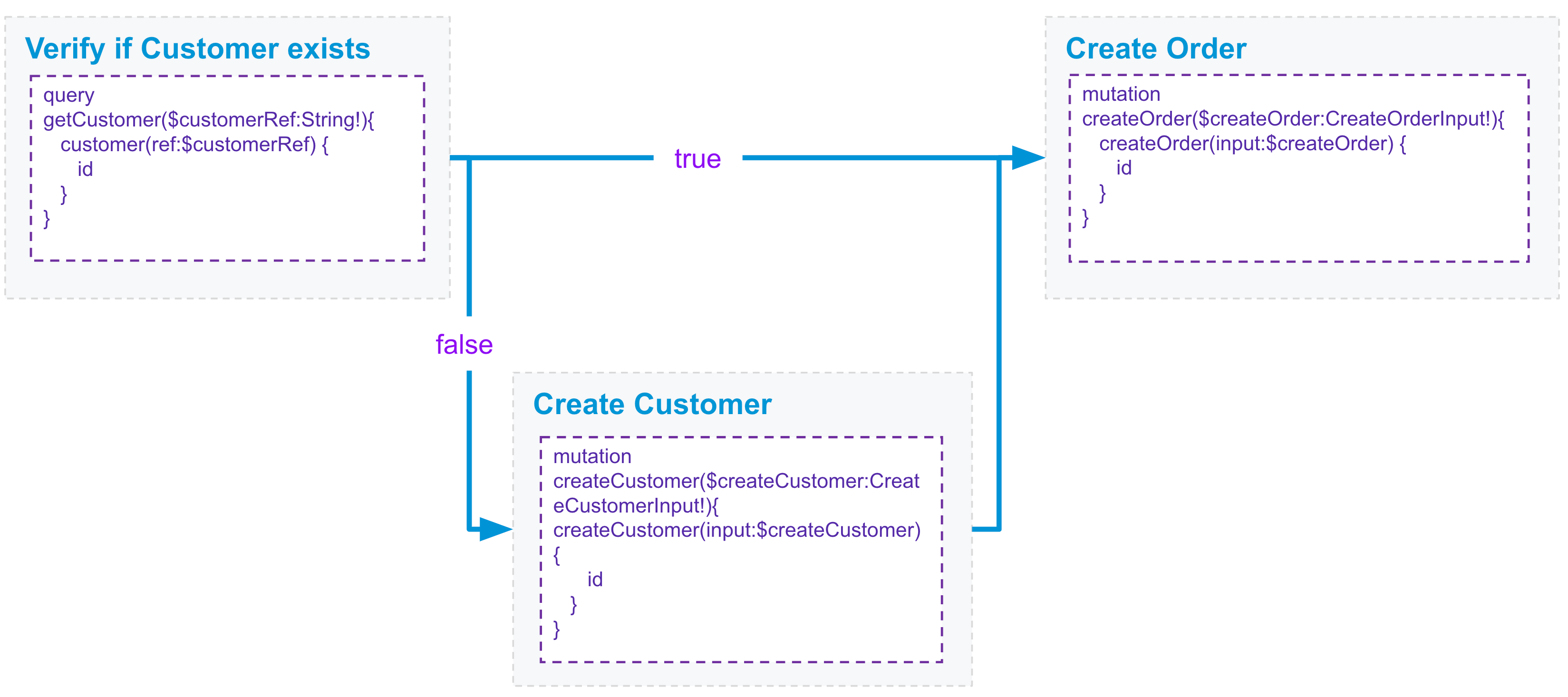Query Create and Update Customer via GraphQL
Author:
Fluent Commerce
Changed on:
12 July 2024
Overview
A best practice guide of creating customer entity.
Key points
- A user guide on how to manage customer entities in OMS.
- Best practice guide on creating Customer entity in OMS before the createOrder mutation.
- Relationship between user entity and customer entity.
Query Customer in OMS
The user can use the `customers` or `customer` queries to search/retrieve customer data in the OMS.
The GraphQL schema can be found here:https://api.production.shared-sydney-01.fluentcommerce.com/graphql/docs/operation/query/
Here is a sample GraphQL `customer` query:
1POST: {{fluentApiHost}}/graphql
2
3// QUERY
4query getCustomer($customerRef:String!){
5 customer(ref:$customerRef) {
6 id
7 ref
8 username
9 firstName
10 lastName
11 status
12 createdOn
13 updatedOn
14 }
15}
16
17
18
19// GraphQL Variables:
20{
21 "customerRef":"1_Marietta_Will5@gmail.com"
22}
23
241POST: {{fluentApiHost}}/graphql
2
3// QUERY
4{
5 customers(ref:"%arietta_Will5@gmail.com%"){
6 edges{
7 node{
8 createdOn
9 updatedOn
10 status
11 ref
12 department
13 username
14 firstName
15 lastName
16 timezone
17 primaryEmail
18 promotionOptIn
19 primaryPhone
20 status
21 retailer{
22 id
23 }
24 }
25 }
26 }
27}
28Create Customer in OMS
The user can use the `createCustomer` mutation to create a customer entity in the OMS.
The GraphQL schema can be found here:https://api.production.shared-sydney-01.fluentcommerce.com/graphql/docs/mutation/createcustomer/
Here is a sample GraphQL `createCustomer` mutation:
1POST: {{fluentApiHost}}/graphql
2
3// QUERY
4mutation createCustomer($retailerId:ID!, $username:String!){
5 createCustomer(input:{
6 username:$username
7 title:"Ms"
8 firstName:"{{$randomFirstName}}"
9 lastName:"{{$randomLastName}}"
10 primaryEmail:"{{$randomEmail}}"
11 primaryPhone:"+1234567890"
12 promotionOptIn: false
13 timezone:"GMT+10"
14 retailer:{
15 id: $retailerId
16 }
17 }) {
18 id
19 ref
20 username
21 primaryEmail
22
23 }
24}
25
26
27// GraphQL Variables:
28{
29 "retailerId": "{{retailer_id}}",
30 "username": "{{retailer_id}}_{{$randomEmail}}"
31}
32
33Update Customer in OMS
The user can use the `updateCustomer` mutation to update a customer entity in the OMS.
The GraphQL schema can be found here:https://api.production.shared-sydney-01.fluentcommerce.com/graphql/docs/mutation/updatecustomer/
Here is a sample GraphQL `updateCustomer` mutation:
1POST: {{fluentApiHost}}/graphql
2
3// QUERY
4mutation updateCustomer ($input: UpdateCustomerInput) {
5 updateCustomer (input: $input) {
6 id
7 ref
8 status
9 createdOn
10 updatedOn
11 retailer{
12 id
13 }
14 title
15 country
16 firstName
17 lastName
18 username
19 primaryEmail
20 primaryPhone
21 timezone
22 promotionOptIn
23 }
24}
25
26
27// GraphQL Variables:
28{
29 "input": {
30 "username": "1_Clarissa.Stokes@yahoo.com",
31 "primaryPhone": "3333344444",
32 "primaryEmail": "new2@emailnew.com"
33 }
34}
35
36Best practice for creating Customers in OMS
Validate customer details before Order Creation
Since the `createOrder` mutation requires a customer ID, the below flowchart demonstrates the best practice for creating a customer:

Ensure the customer username is unique across the account, not just the retailer.
The customer entity is located at the retailer level (same as the Order entity) in the OMS data structure. It is a best practice to ensure the customer->username is unique across the Account level, not just the retailer level. This will reduce any confusion when it comes to cross-retailer setup.
